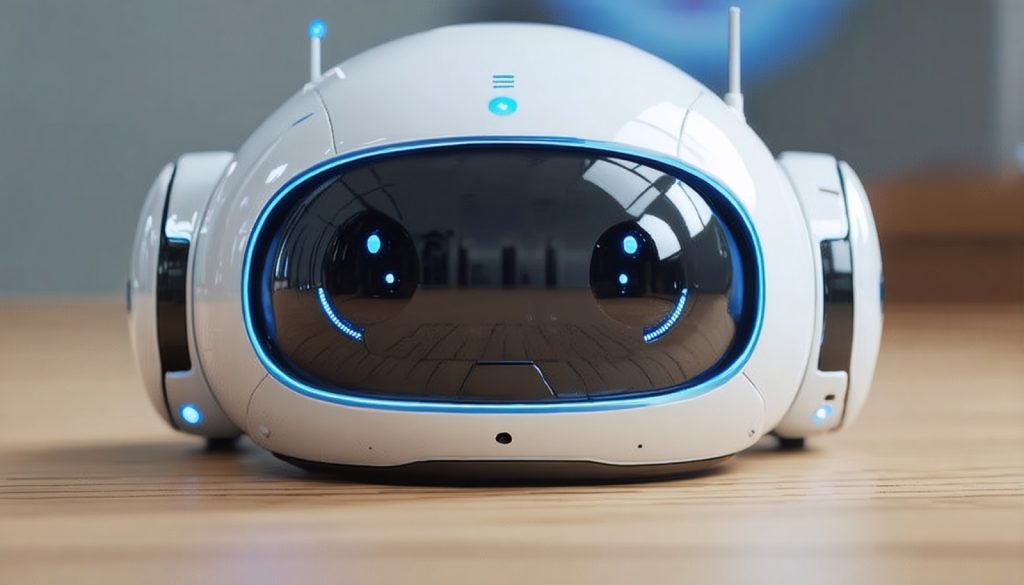
- Tom and Jerry enter the digital age with a new AI-generated episode, sparking both admiration and skepticism.
- Powered by the TTT-MLP tool from Stanford and NVIDIA, this adaptation blends nostalgia with modern technology.
- The episode highlights AI’s capability to animate entire stories with minimal human intervention.
- Critics argue the absence of hand-drawn charm results in a “soulless” rendition lacking spontaneity and emotional depth.
- This innovation prompts debate about whether AI can complement or replace human creativity in storytelling.
- The future of animation lies at the intersection of tradition and technology, questioning AI’s role in capturing storytelling’s heart.
Amidst the concrete canyons of a digital New York City, a quintessential duo from the golden age of animation tiptoes cautiously into the future. Tom and Jerry, beloved for their timeless slapstick antics, now dance to the tune of artificial intelligence, a modern maestro governing pixels instead of paintbrushes. This contemporary rendition—a one-minute episode brought to life by the potent TTT-MLP tool created in the halls of Stanford and NVIDIA—has prompted a flurry of online chatter, equal parts admiration and skepticism.
Dusty Desks and Digital Delights
The scene opens with Tom, the ever-determined feline, stepping into a sleek office building, the elevator ping echoing like a starter pistol in the chaotic marathon to follow. Once settled at his desk, adorned not with the tools of yesteryear but the bleeps and bloops of modern technology, a typical morning transmogrifies into madcap mayhem. Jerry, the mischievous mouse, tweaks a wire, setting the digital gears in motion for a chase that transcends time. This uncanny fusion of nostalgia and innovation showcases AI’s ability to animate entire adventures with mere whispers of human guidance.
A Double-Edged Lens: Enchantment and Erosion
This foray into AI-generated storytelling has held some viewers in thrall—a marvel of technological advancement that reframes a beloved narrative in contemporary spectacle. Yet, the glossy veneer soon reveals its cracks. Critics lay bare the episode’s lack of palpable heart, branding it a “soulless” rendition marred by glitches. The charm of hand-drawn artistry, they mourn, is withering in the shadow of digital convenience.
“This tech,” a voice in the digital void reverberates, lamenting a future overrun by recycled creativity. The absence of spontaneous humor and genuine conflict leaves a void that not even the frenetic chase can fill. Animated magic, traditionally infused with human emotion, teeters on the brink of an automated abyss.
Navigating the New Frontier
This polarizing glimpse into the animation industry’s possible future forces a reexamination of what truly breathes life into art. Can cleverly crafted algorithms ever replace the human touch? Or does this shift herald a new chapter, where innovation complements rather than eclipses the skill of the animator’s hand?
For now, Tom and Jerry remain entangled in a digital conundrum, navigating the crossroads of tradition and technology. As audiences contemplate the place of AI in creativity’s realm, one truth stands clear: the heart of storytelling beats strongest when technology tunes in to the soul of the tale.
Artificial Intelligence Meets Animation: The Revived Adventures of Tom and Jerry
The Intersection of Nostalgia and Innovation
The iconic duo, Tom and Jerry, have transited from the pencil-drawn frames of the past into a digitally-driven realm. Using advanced AI tools such as the TTT-MLP developed by experts at Stanford and NVIDIA, new episodes are designed with unprecedented precision and speed. This transition illustrates both remarkable technological advancement and the constraints it presents to traditional storytelling.
How AI is Transforming Animation
1. Speed and Efficiency: AI can generate complex animations rapidly, cutting production time by significant margins and reducing costs.
2. Market Adaptation: The animation sector is swiftly embracing AI not just for cost-reduction, but also for the ability to produce localized content for diverse audiences.
3. Innovation in Storytelling: AI can churn out new narratives by analyzing vast datasets, allowing it to create content tailored to current cultural trends and viewer preferences.
Controversies and Limitations
– Lack of Emotional Depth: Critics argue that AI, while efficient, lacks the soul and nuance of human-crafted animations. The spontaneous humor and emotive qualities intrinsic to hand-drawn animations often do not translate in machine-created content.
– Artistic Integrity: Many in the animation community worry about the loss of traditional art forms and skills, as AI continues to overshadow human creativity.
– Glitches and Errors: Technical errors, or “glitches,” can detract from the viewing experience, highlighting that AI still has a learning curve to navigate.
Industry Trends and Market Forecast
With AI technology rapidly evolving, the animation industry is shifting towards more hybrid models where AI complements human creativity. According to industry reports, by 2025, AI is expected to play a prominent role in content creation across multimedia platforms, thus reshaping the landscape of animation and storytelling.
Strategic Recommendations for Creators
1. Embrace Collaboration: Utilize AI as a tool to enhance human creativity rather than replace it. Creators should aim for a balance where AI assists in generating ideas or frameworks, allowing artists to refine and personalize the final output.
2. Focus on Quality: Leverage AI’s capabilities for enhancing visuals and storytelling but prioritize maintaining the emotional depth and originality that only human input can deliver.
3. Adapt and Innovate: Stay abreast of technological developments to explore new creative opportunities, ensuring that traditional narrative techniques evolve with digital advancements.
Conclusion and Actionable Tips
While the debate between AI and traditional animation continues, creators and storytellers should focus on leveraging the strengths of both approaches. Investing in upskilling to integrate digital tools, while preserving the essence of human artistry, will be critical to thriving in this dynamic landscape. As AI continues to influence the creative industries, the synergy of emotion-powered artificial intelligence is the future — one that captivates audiences, both old and new.
For more insights and updates on AI in animation and other industries, visit nvidia.com and stanford.edu.



